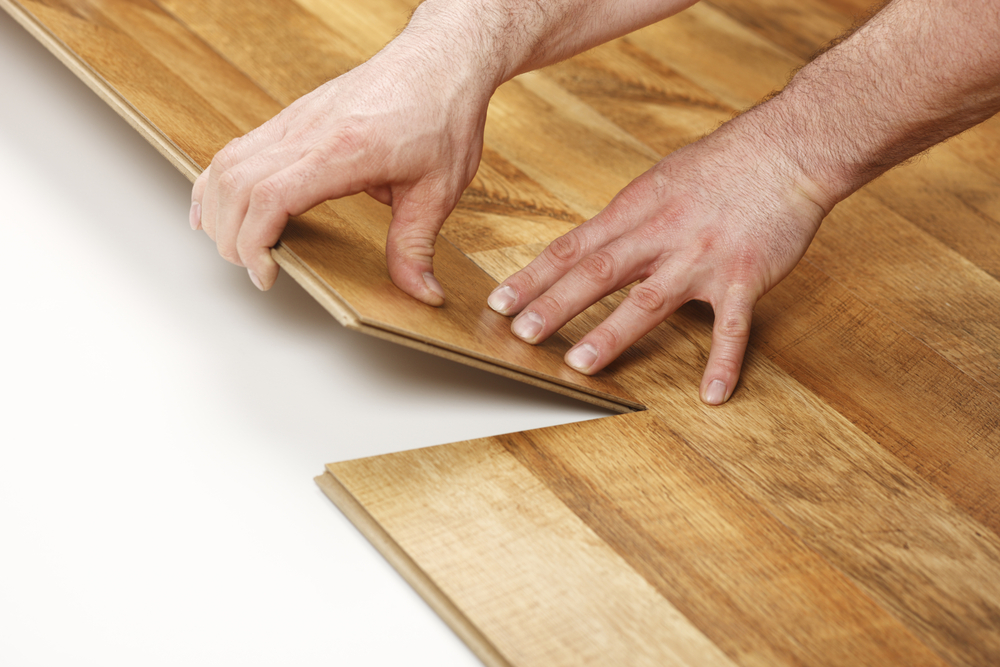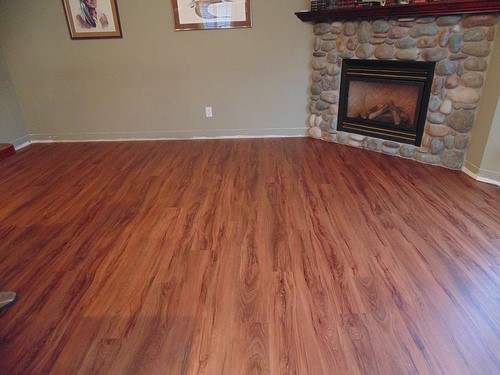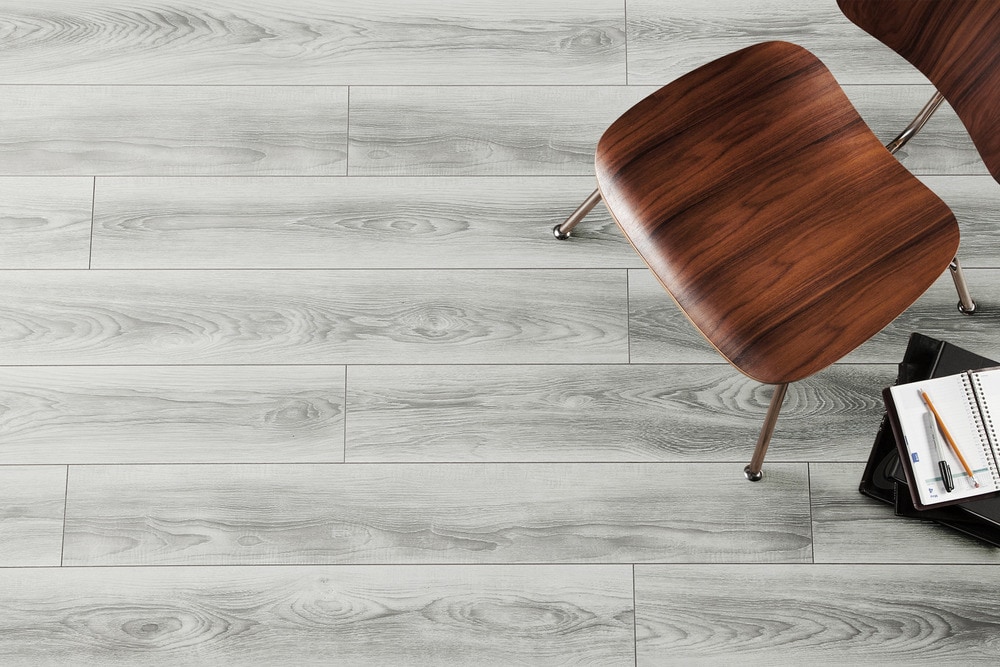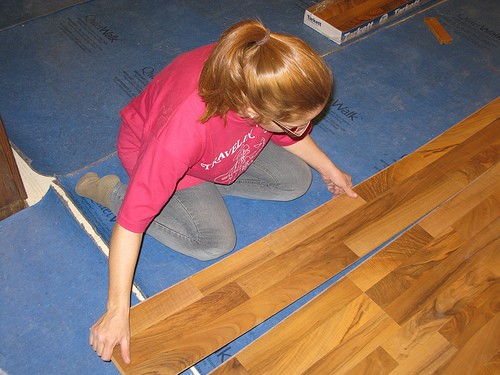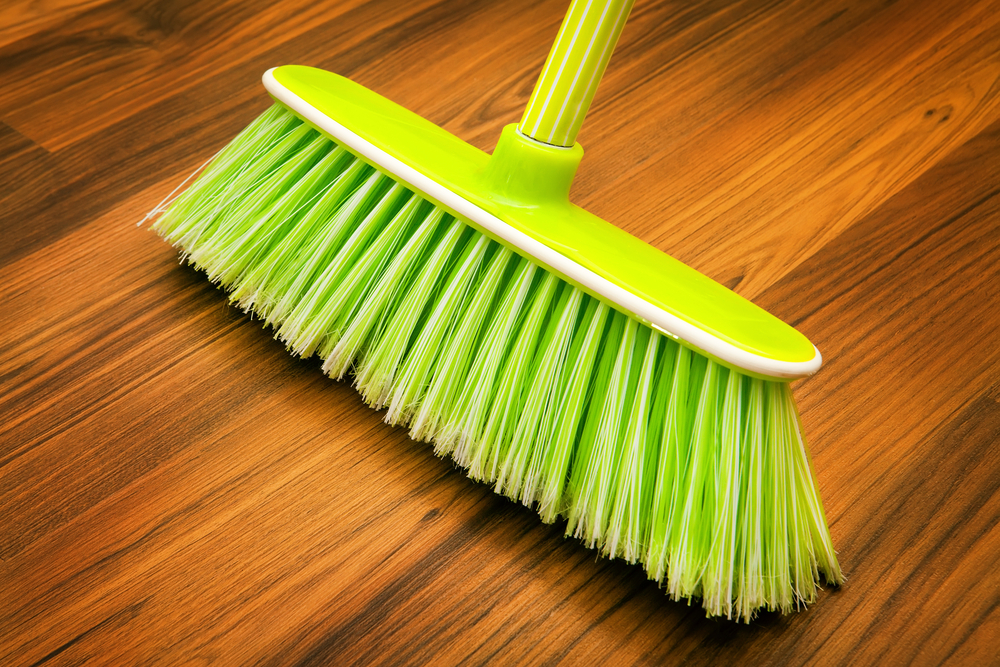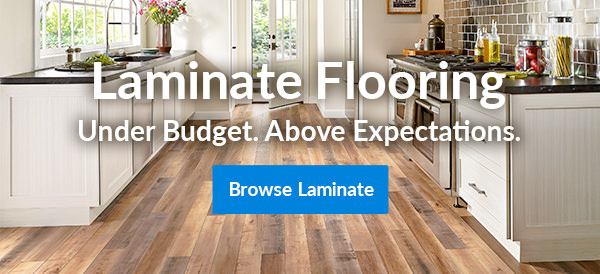The Evolution of Laminate Flooring
Laminate flooring is an affordable, easy-care flooring solution for homeowners. But where does it come from and what are its applications? We’ll break down the details about this popular flooring, plus show you the ways in which laminate flooring history has evolved over the years.
What is Laminate Flooring?
Laminate flooring is a type of multilayered flooring system. But have you ever asked yourself, “What is laminate flooring made of?” Here’s a brief explanation.
A backing layer forms the laminate floorboard’s base. This layer works to resist moisture that could cause the board to lose its shape.
An image design layer sits on top of the inner core layer. The image design gives the laminate flooring its distinctive look. A photographic design on this layer typically mimics wood, stone, metal, or another popular material. Some image design layers are also textured to enhance their appeal.
Finally, a wear layer tops off the construction. This layer protects your laminate flooring from scratches, fading, and damaging forces. This layer also typically has aluminum oxide in its finish to reduce wear and tear.
Laminate floorboards click and lock together, eliminating the need for glue, nails, and other fasteners. These floorboards “float” above the subfloor, expanding and contracting with your home’s changing humidity and temperature levels.
Laminate Flooring History
Early laminate flooring arrived on the market in the 1970s. Chemical industry giant Perstorp AB Holdings gets the credit with developing the first modern laminate flooring in 1984. Its product, called Pergo, took the decorative laminate commonly used on kitchen countertops and brought it to floor surfaces.
Pergo floors found their way into Europe first, where they quickly became the biggest flooring innovation since the launch of cushioned vinyl in the 1960s. These floors were most commonly seen in household kitchens.
Pergo floors reached the North American market in 1994 and attracted similar fanfare. People loved that laminate flooring allowed them to enjoy the look of hardwood floors at a reduced cost. However, early laminate floors weren’t fully realistic. Their fake, plastic-looking finish would rarely pass for real wood.
Despite their shortcomings, in 2004, consumers bought more than 750 million square meters of laminate wood flooring, according to the European Producers of Laminate Flooring. The biggest growth in market share came from North America.
New Developments in Laminate Flooring
Laminate flooring options have begun to more closely resemble the materials they mimic. Now, you’ll find little differences in appearances between an authentic hardwood floor and a laminate floor meant to look like hardwood. In fact, high quality laminate flooring looks so realistic that flooring experts can get fooled from time to time.
Design Advances and Technology
Design advances include the addition of realistic beveling, grooves, and distressed finishes that take the look of laminate floors to the next level. Advanced embossing techniques add textures to laminate flooring which can make the flooring look like a particular wood grain and feel more realistic underfoot.
Technology has also improved the layers of laminate flooring over the years. Improvements in the fiberboard core, which impacts durability, stability, and resistance, and the under layer, which absorbs noise and absorbs minor imperfections in the subfloor, have helped these layers do their jobs better.
A recent advancement has helped laminate flooring become a more water-resistant flooring product than its predecessors. Laminate floorboards with higher Abrasion Class ratings, made to withstand more wear and tear, are penetrating the market. Corundum and innovative proprietary resin formulas additions on the top wear layer has also made these floors more durable. This is a far cry from the laminate flooring history above.
Installing laminated floors has never been simpler. The locking systems that made laminate flooring so revolutionary have also improved, making them even easier for DIYers to work with.
Sustainable, Certified Flooring
As with so many construction elements, laminate flooring has become more sustainable over time. Understanding consumers’ desires for eco-friendly products, more manufacturers use natural resources like wood chip fiberboard in their laminate floorboards. This fiberboard is free of air-damaging chemicals and can be installed without harsh chemical glues and adhesives.
Official product certification is also a relatively new development. The North American Laminate Flooring Association, NALFA, has developed a certification seal which denotes products that pass 10 comprehensive performance tests. Independent, third-party scientists decide how well laminate floors resist water, light, and stains, for example, during the testing process.
Only the best laminate floors receive NALFA certification, so considering this certification is a great way to decide how to choose laminate flooring that will serve your home well year after year.
Laminate Flooring Today
Laminate flooring history has lead us up to its recognition today as a popular choice for consumers — a low maintenance, durable alternative to traditional hardwood floors. Tongue-and-groove edges fit together with a click-locking system, a process that makes them easy for homeowners to install themselves. You don’t need to use nails or glues: Snap the floorboards together, tap them into place with a hammer or tapping block, and you’re good to go.
Installers don’t need special skills, and the installation process uses tools most homeowners already have. Since installing laminate flooring is easy, some home decorating experts believe this flooring type helped to fuel the focus on DIY around the home.
Considerations for Installations
While the installation process is relatively simple, you need to keep a few points in mind. First, pay careful attention to the floor design as you install the floor. Experts suggest laying out your laminate floorboards first to make sure you like the look before locking the boards in place.
If you don’t feel completely comfortable installing your own laminate floorboards, you can enlist the help of a professional. In most cases, a contractor will also be responsible for any installation issues that occur after your laminate floorboards are installed. However, professionals can be pricy. Consider your own DIY abilities, the cost of labor, and the time your project might take when deciding whether to use professional floor installers.
Taking Laminate Flooring Beyond the Kitchen
The advantages of laminate flooring have spread outside the kitchen and into other areas of the home. Now, you can commonly see this type of flooring in family rooms, living rooms, dining rooms, and other areas of the home. Its durability makes it ideal for high-traffic areas.
Pet owners and parents with small children will also appreciate laminate flooring’s durable nature. However, this flooring is not indestructible. While it will withstand some level of abuse, you can’t refinish the floor, so make sure you’re not too harsh on your floor.
Laminate Flooring Care Tips
While laminate flooring is a water-resistant flooring choice, laminate flooring doesn’t tolerate standing water well. This floor will work in a damp space like a basement, but many people recommend choosing a different flooring material for areas where spills commonly occur, such as bathrooms, kitchens, and laundry rooms. If you spill something on your laminate floor, wipe up the spill quickly to prevent longstanding damage.
Once you install laminate flooring, you’ll find this flooring easy to care for. Simply vacuum up dust and mop up spills to keep your laminate floorboards looking their best.
Costs vary depending on the brand and quality of your laminate floorboards, but most flooring products range between 50 cents to $3 per square foot. If you don’t want to go the DIY route, you should also consider the cost of installation when creating your home improvement budget.
Advances in laminate flooring technology have helped make this product a versatile and stylish flooring choice that scores of households choose for their flooring needs.

